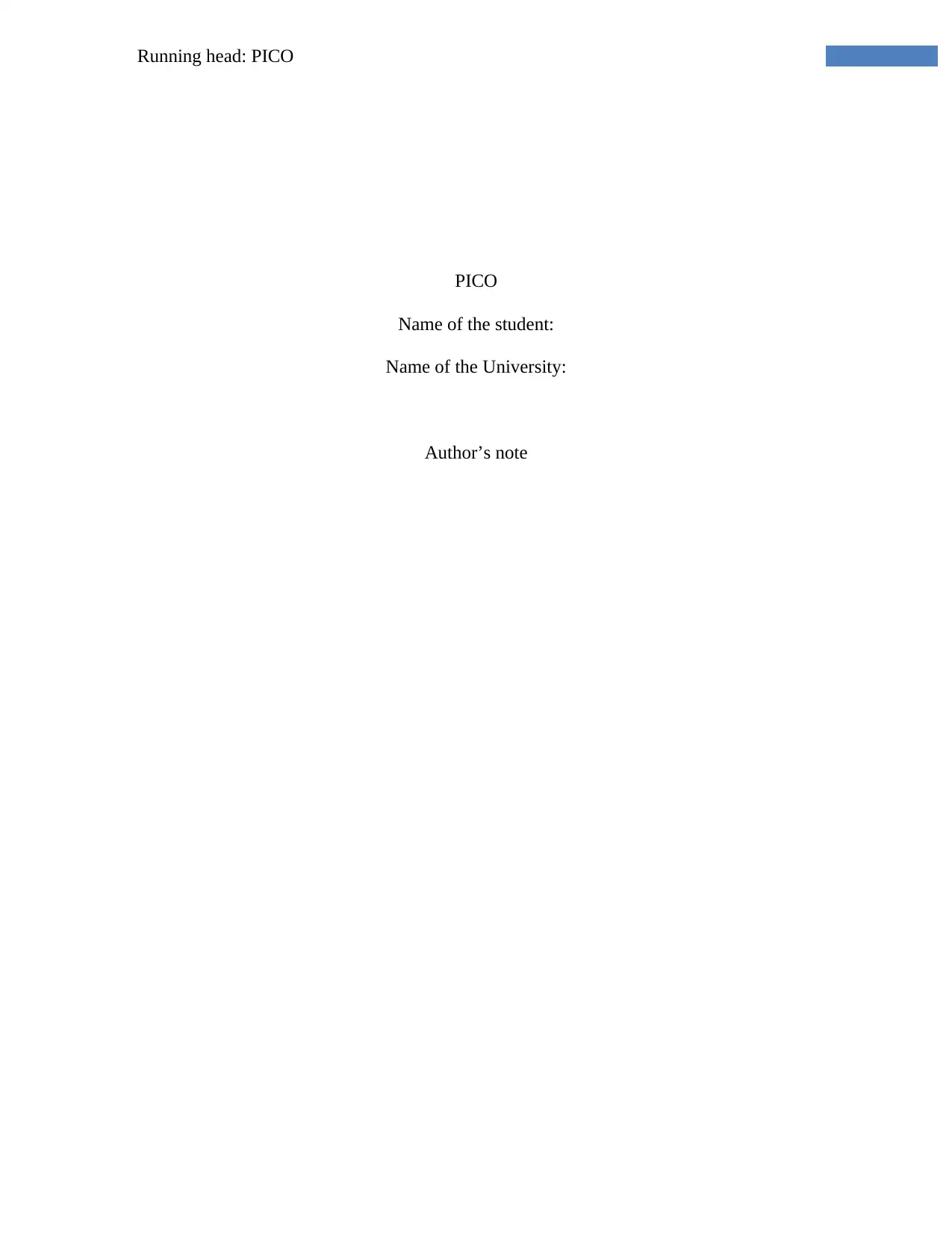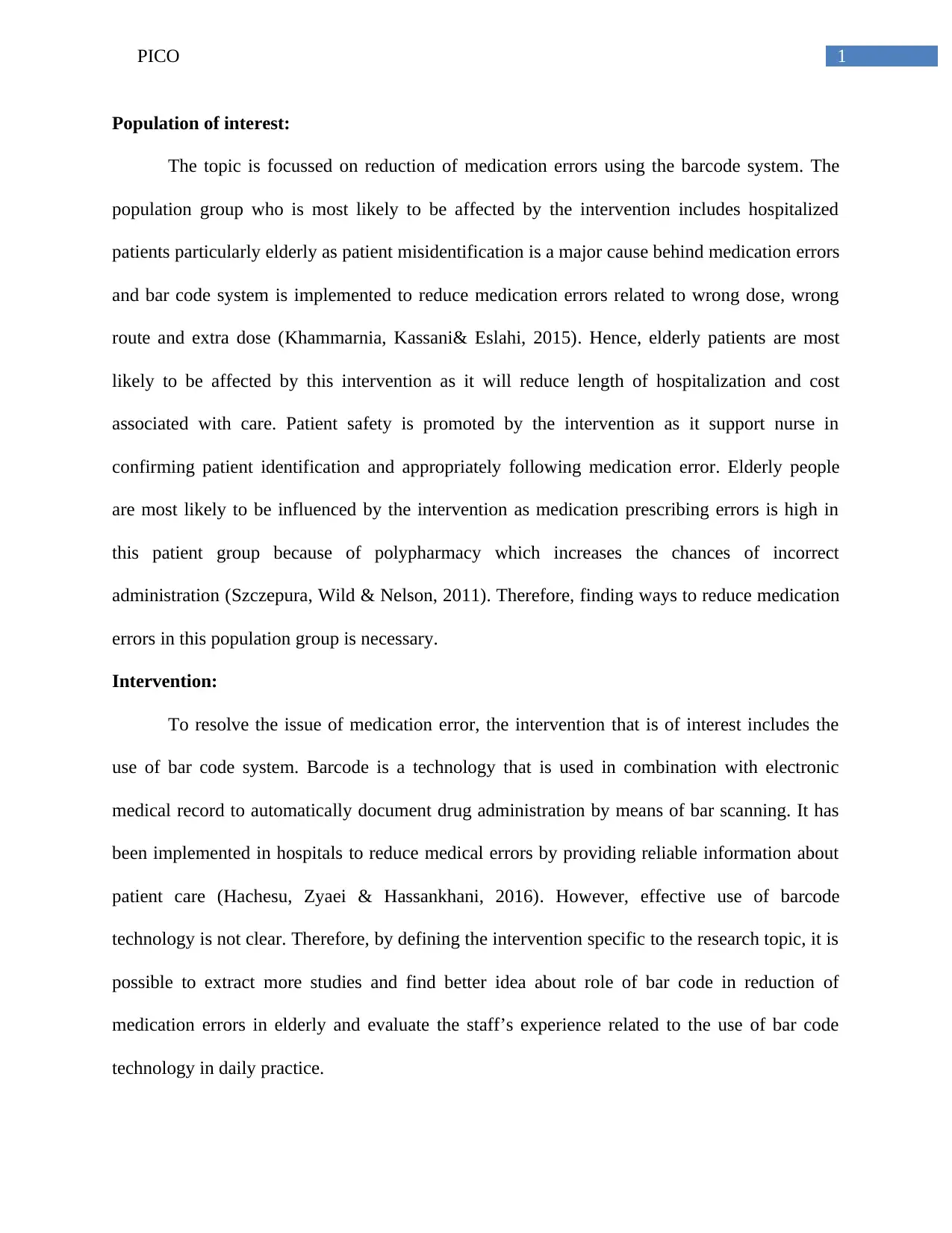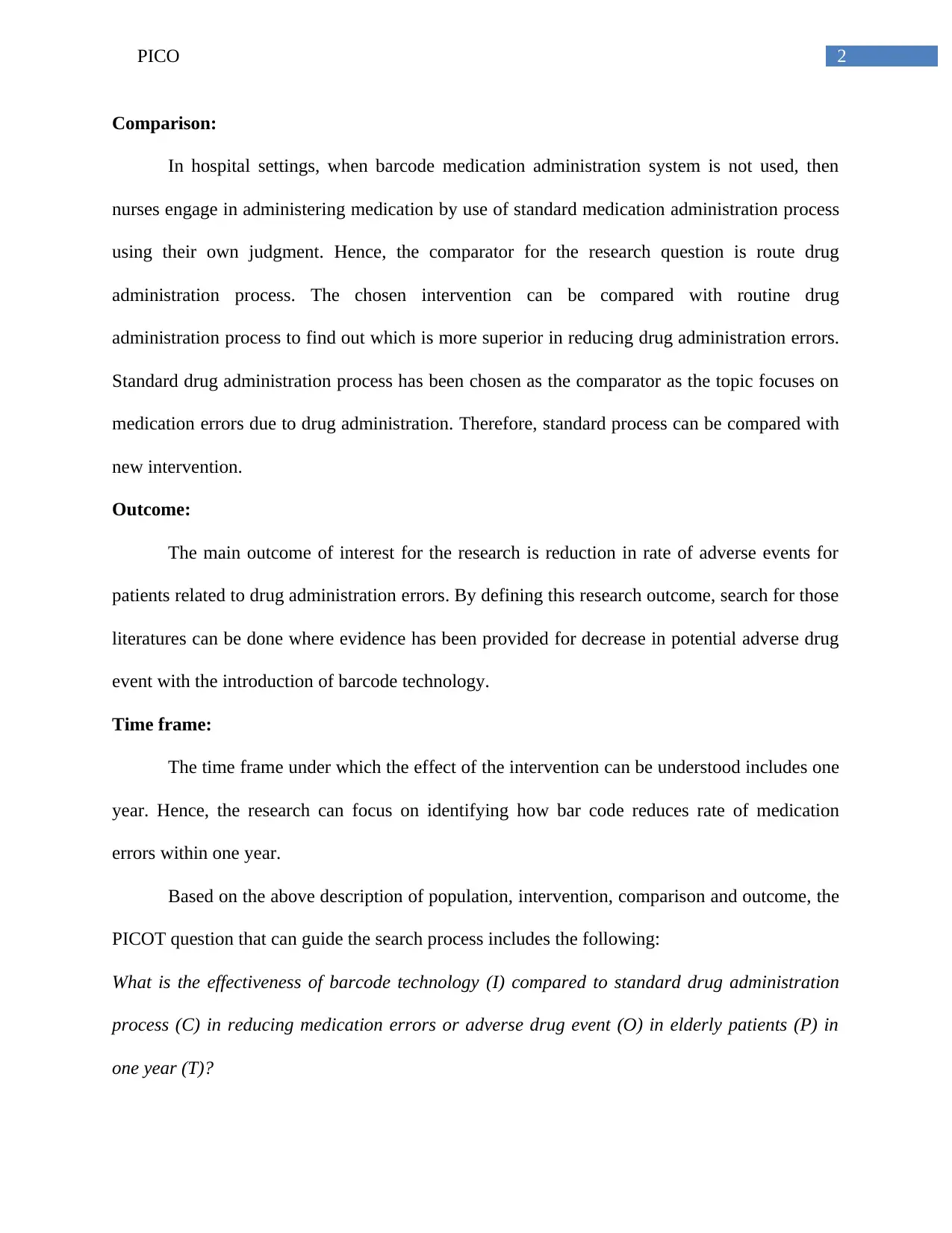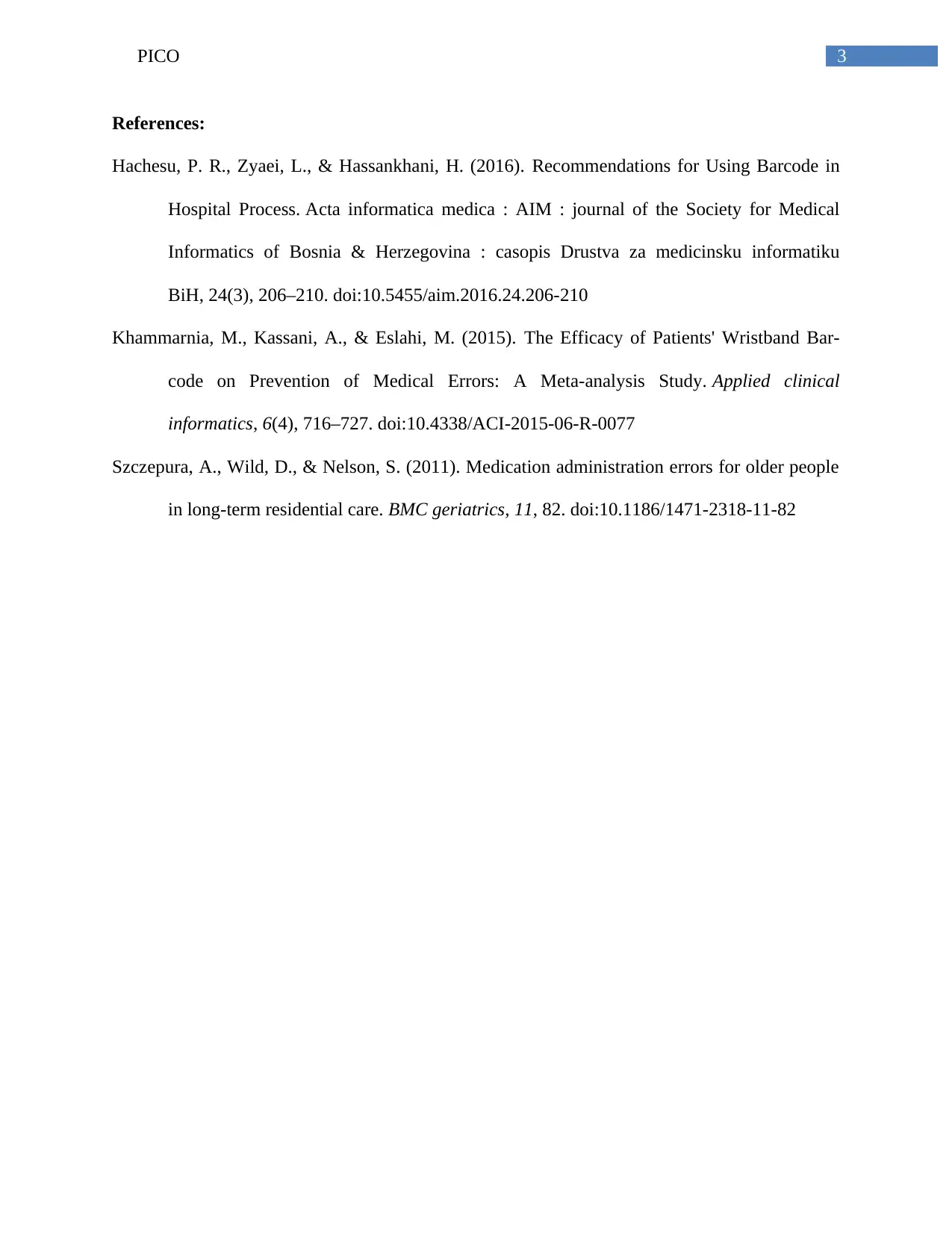NUR 440: PICO Analysis of Barcode System for Medication Errors
VerifiedAdded on 2022/11/23
|4
|750
|303
Homework Assignment
AI Summary
This assignment provides a detailed PICO(T) analysis, a framework for structuring research questions, focusing on the reduction of medication errors. The analysis centers on the use of barcode systems in healthcare settings, specifically examining its effectiveness in reducing medication errors in elderly patients. The assignment identifies the population of interest as elderly hospitalized patients, the intervention as the barcode system, and the comparison as standard drug administration processes. The primary outcome of interest is the reduction in adverse events related to medication errors, with a time frame of one year. The analysis highlights the importance of barcode technology in improving patient safety by supporting nurses in patient identification and correct medication administration, especially in light of the increased risk of errors due to polypharmacy in elderly patients. The assignment concludes with a specific PICOT question to guide further research into the effectiveness of barcode technology.
1 out of 4











![[object Object]](/_next/static/media/star-bottom.7253800d.svg)